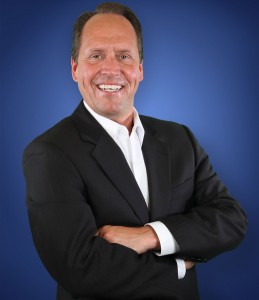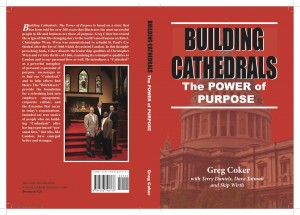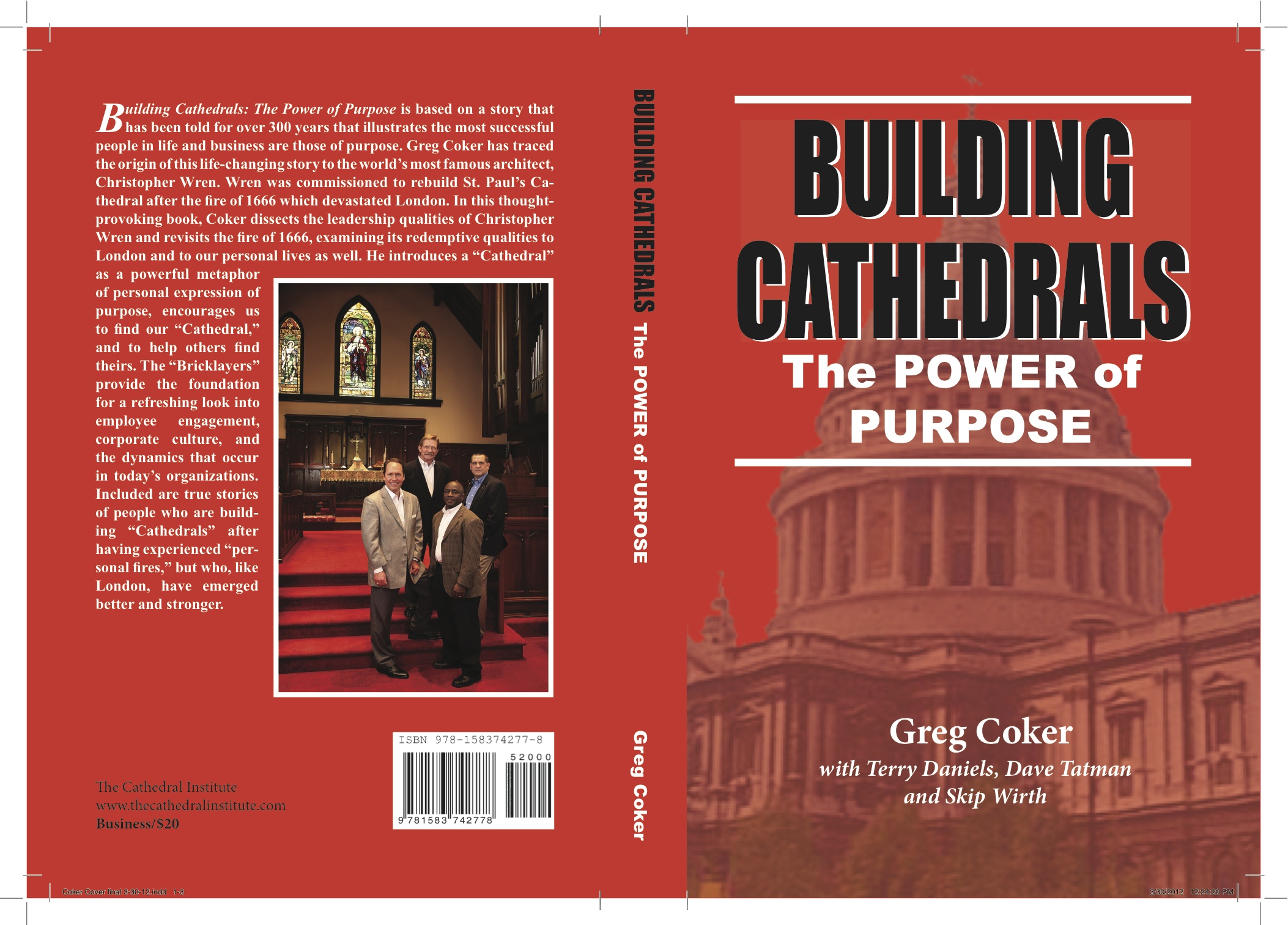20 years as a senior-level executive with three Fortune 500 companies, a high-level governmental official, a political player rubbing elbows with governors, members of congress and even private visits with the President.
However, after 20 years of climbing the corporate ladder, extensive travel and a cell phone permanently in my ear, I started to feel that while I had achieved some level of “success,” I was lacking “significance.”
While playing corporate musical chairs, the music suddenly stopped one Friday afternoon and I found myself without a chair in that ivory tower I had grown so comfortable in occupying. But it was a 300 year old story that would not only be redemptive; it would provide the purpose I had been seeking and the means to help others in similar situations find their purpose.
Ironically, I had delivered thousands of speeches over the years about the power of purpose. Included in those speeches was a simple yet powerful story of a bystander observing two people laying bricks. The first person when asked what he was doing responded, “I’m laying bricks.” The second responded, “I’m building a cathedral.” Naturally, the “cathedral builder” had resonated more with me than the “bricklayer,” but after 20 years of playing the corporate game, pushing my way to the front of the room, I was starting to feel more like that “bricklayer.” And unfortunately, I wasn’t alone.
Numerous studies report that less than half of employees are actually satisfied with their jobs and feel a sense of purpose. Other surveys suggest that a high number of employees would leave their companies today if the economy were better. And with one in ten Americans currently unemployed, six of those ten unemployed say the next job they get will most likely not provide purpose; instead, they expect to have to settle for something less.
A women and workplace survey from “More Magazine” revealed that 43% of the women surveyed say they are less ambitious now than they were a decade ago. And only a quarter of the 500 women ages 35 to 60 say they’re working toward their next promotion. Three out of the four of women in the survey, 73%, say they would not apply for their boss’ job, reporting the stress, office politics and lack of purpose make the leap simply not worth it. In fact, two of three women said they would accept considerably less money for more free time and more flexibility. The bottom line is, there’s never been a time when Americans, male and female, young and old, public and private sector, need a sense of purpose.
The bricklayer and cathedral builder story, albeit apocryphal, started to convict me. And while I had told that story for many years, I was unaware of its origin or its authenticity. Research led me to the world’s most famous architect, Christopher Wren, who was commissioned to rebuild St Paul’s Cathedral after the great fire of 1666 which leveled London.
One day in 1671, Christopher Wren observed three bricklayers on a scaffold, one crouched, one half-standing and one standing very tall, working very hard and fast. To the first bricklayer, Christopher Wren asked the question, “What are you doing?” to which the bricklayer replied, “I’m working.” The second bricklayer, responded, “I’m building a wall.” But the third brick layer, the most productive of the three, the future leader of the group, when asked the question, “What are you doing?” replied with a gleam in his eye, “I’m building a cathedral to The Almighty.”
The characters in this simple yet powerful story not only changed my life, they provided the contents and the outline for my newly released book “Building Cathedrals: The Power of Purpose.” I had found an ideal leader in Christopher Wren. He was an inspirational leader who got out from behind his desk and challenged others to see the “big picture.” Is there a “Christopher Wren” in your organization? Are you that “Christopher Wren?”
The Fire provided a powerful metaphor for the setbacks and devastation in our personal lives. Devastations like death, divorce, job loss, alcohol/drug abuse, losing an election. Pre 1666 London was a very medieval place. 10,000 people annually dying of the plague. The number one cause of the plague was rats and fleas. Post 1666 the rats and fleas were eradicated and the leaders of London were determined and succeeded in rebuilding a great city. What are your “rats & fleas?” For me it was pride, ego, and self-absorption. The post 1666 London provided the motivation for me to rebuild after a major devastation in my life, a job loss. You too can be better, stronger and faster after devastation in your life.
In my book and keynote speech, I introduce a powerful metaphor, a “cathedral,” as a personal expression of purpose and encourage others to not only find, pursue and build their “cathedral,” but help and support others in building their “cathedral.” So, what’s your “cathedral?” Is it time to start building your “cathedral?” Maybe building your “cathedral” with more energy, more passion, more dedication? The “bricklayers” provide the foundation for a rich and needed discussion on employee engagement, corporate culture and team dynamics that occur in modern day organizations. Which “bricklayer” are you? What role do you play in helping that “bricklayer” to see the “cathedral?” Is your organization a culture of “bricklayers” or a culture of “cathedral builders?”
I left the comfort and security of corporate America on September 2nd 2011 (Coincidently, the Fire of 1666 occurred on September 2nd) and now pursuing my passion, building my “cathedral” assisting others in finding their purpose delivering the keynote speech, “Building Cathedrals: The Power of Purpose,” based on my book, to Fortune 500 companies, government agencies, trade associations, civic organizations, colleges and universities.
I was simply amazed to find out no one had taken this powerful story of Christopher Wren, the fire of 1666 and the three bricklayers and applied these valuable lessons, these powerful metaphors to not only our personal lives but to modern day business and government. This story was simply too powerful, the metaphors too strong not to write a book about it. Looking back over the last 20 years, I hadn’t been really building “cathedrals” as much as I was building “me.” True “cathedral builders” aren’t focused on building themselves. Their focus is on building others and assisting them in building their “cathedrals.” Thanks to a 300 year old story, I’ve made the transition and have never been happier! Please join me in this wonderful journey!
















Leave a Reply